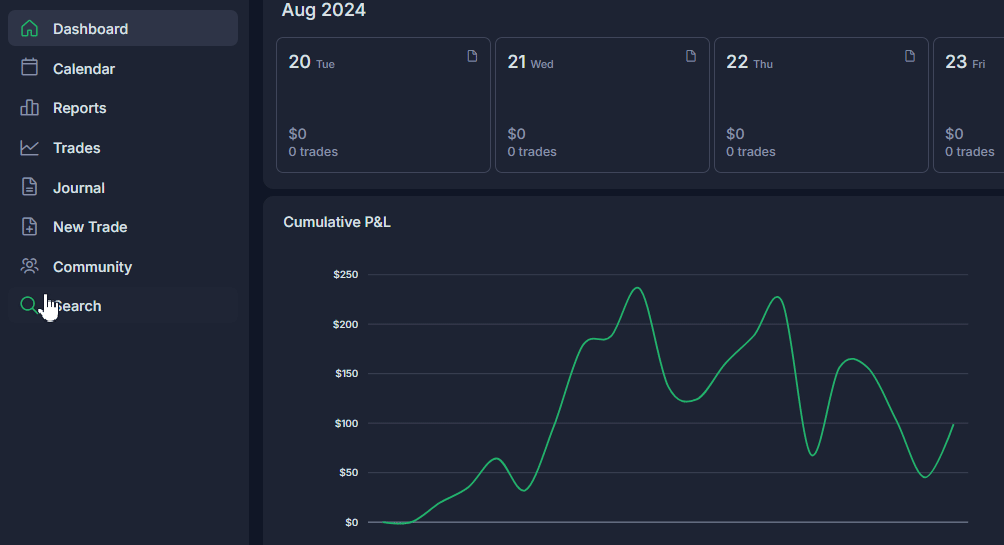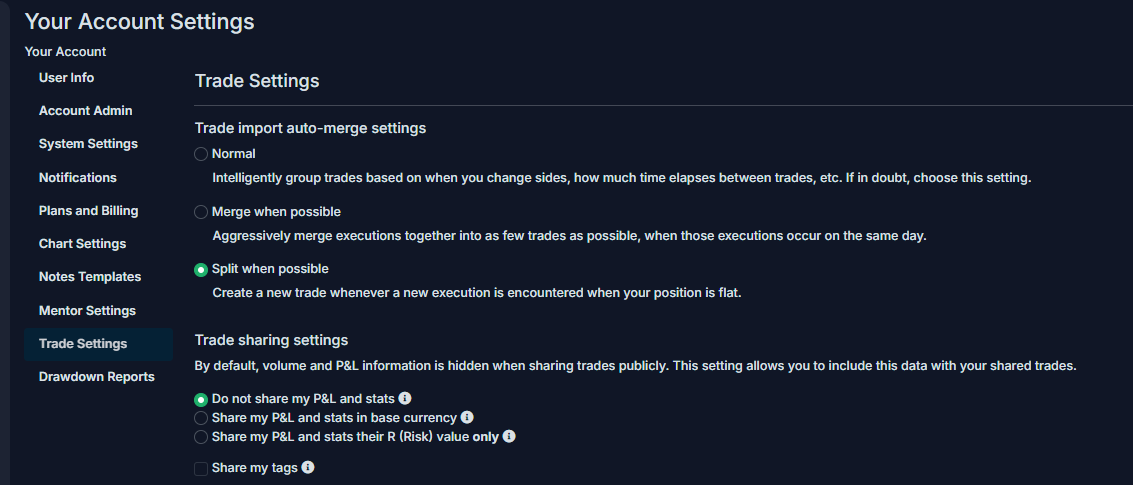Split and Merge Trades in Tradervue
In Tradervue, a "trade" consists of a group of executions, and only trades have associated P&L. When you import trades, they often come as individual executions, such as multiple buy or sell transactions that occur over time or across different venues.
Tradervue's algorithm automatically groups these executions into logical trades, but you may sometimes need to adjust this grouping. Here’s how to split and merge trades to better align with your trading records.
Understanding Trade Grouping
Tradervue uses an algorithm to group executions into trades, typically starting a new trade when:
- You change sides (e.g., from long to short).
- A certain time limit has passed since the last trade closed.
While this automatic grouping usually aligns with how you view trades, there are scenarios where you may want to manually adjust the grouping.
Splitting Trades
If you need to split a trade into separate trades, follow these steps:
- Go to the Trades Section.
- Select the Trade/Trades to Split:
- Click Select Action:
In the dropdown menu, choose Split Trades, and Submit to confirm

Merging Trades
To merge trades into a single trade, use these steps:
- Go to the Trades Section.
- Select the Trade/Trades to Split:
- Click Select Action:
In the dropdown menu, choose Merge Trades, and Submit to confirm

Auto-Merge and Auto-Split Settings
For future imports, you can adjust the settings to automatically create a new trade whenever you get flat:
- Log in to your Tradervue account.
- Click on the Settings menu: located next to your username in the left corner.
- Go to the Trade Settings Tab.
- Adjust Trade Import Settings: Choose the options that best fit your trading style and needs.
- Click Update to save.
Note: Auto-merge and auto-split settings are available only in the Silver and Gold packages.

Managing Existing Trades
For existing trades, you can either:
- Use the Split function as described above.
- Delete the trades and re-import them. You can delete multiple trades at once using the bulk editor.
By using the split and merge functions, you can ensure that your trades are accurately reflected in Tradervue, allowing for more precise performance tracking and analysis.
Need Help?
If you have questions or encounter issues importing data, please reach out to support@tradervue.com or use the "Contact Us" link below.
